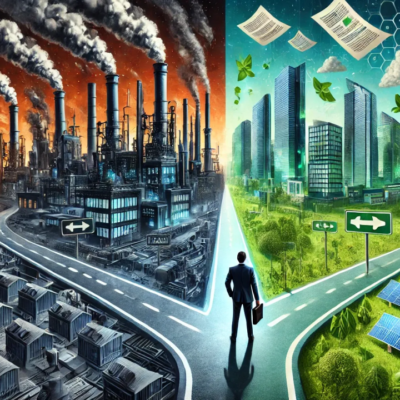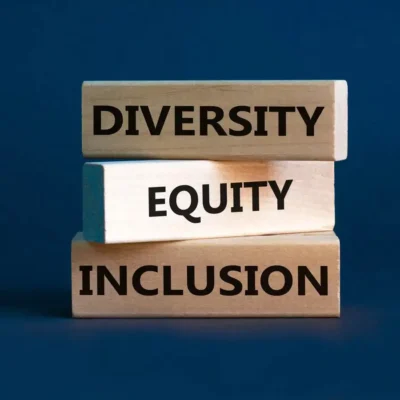Economists and financial analysts have been increasingly worried about one troubling term: risk of stagflation. This economic situation a toxic mix of slow growth, rising unemployment, and high inflation—could be making a comeback due to two powerful forces: growing wage pressures and the return of trade tariffs.
If you’re wondering what all this means and why it matters to you, you’re not alone. Let’s break it down in simple terms and explore why the risk of stagflation is something the world should be watching closely.
What Is Stagflation?
Before diving into the causes, it’s important to understand what stagflation really is. The word is a combination of “stagnation” and “inflation.” It describes an economy that’s not growing (or growing very slowly), while prices for goods and services keep rising. That’s a tricky situation because it means people may be earning less or losing jobs, but still have to pay more for everyday items like groceries, fuel, and housing.
Key features of stagflation:
- High inflation: Prices rise rapidly across the board.
- Sluggish economic growth: GDP growth slows or even shrinks.
- Rising unemployment: Job opportunities dry up, and more people struggle to find work.
Why Is the Risk of Stagflation Coming Back Now?
Over the past year, the global economy has faced multiple shocks: supply chain disruptions, global conflicts, energy crises, and rising interest rates. But two specific issues have been pushing the risk of stagflation even higher: tariffs and wage pressures.
Tariffs: A Tax That Comes Back Around
Tariffs are essentially taxes on imported goods. Governments use them to protect local industries or to retaliate against unfair trade practices. However, when tariffs are imposed or increased, they often result in higher prices for consumers.
How tariffs contribute to stagflation:
- Higher prices on imported goods: Companies pass these costs on to consumers.
- Supply chain bottlenecks: Tariffs often disrupt the flow of goods, causing delays and shortages.
- Retaliation from trade partners: Other countries may impose their own tariffs, hurting exports.
For example, recent tariff increases between major economies like the U.S. and China have led to rising costs for electronics, clothing, and even raw materials. This creates a ripple effect across the economy. Businesses spend more to get the same goods, and consumers are left with fewer choices and higher bills.
Wage Pressures: More Pay, More Inflation?
Another big factor increasing the risk of stagflation is wage pressure. Over the past few years, many workers have pushed for higher wages due to inflation and labor shortages. While this is good news for employees in the short term, it can have longer-term side effects.
How rising wages can lead to inflation:
- Businesses pass on labor costs: If companies have to pay workers more, they often raise prices to cover the difference.
- Higher prices reduce demand: When things get more expensive, people buy less, slowing down growth.
- Wage-price spiral: Workers demand even higher wages to keep up with inflation, leading to more inflation.
While wage increases help workers keep up with living costs, they can also add fuel to the inflation fire. If this happens while growth is slowing, you have the perfect storm for stagflation.
A Look at the Current Economic Indicators
Let’s take a snapshot of the current situation in various regions to understand how close we might be to stagflation.
United States
- Inflation has cooled slightly but remains above the Federal Reserve’s 2% target.
- Unemployment remains low, but job growth has slowed.
- Tariff threats have returned in political discussions, especially related to China and Mexico.
- Wages have grown consistently, especially in the service sector.
European Union
- Inflation remains stubborn in many countries, especially in energy and food.
- Economic growth has stalled, with Germany showing signs of recession.
- Labor unions are negotiating hard for better pay, increasing pressure on companies.
Asia-Pacific
- China’s economic recovery is slow and uncertain.
- Manufacturing costs are rising due to both internal wage growth and international tariffs.
- Developing countries face both currency pressures and inflation, slowing growth.
Who Suffers the Most from Stagflation?
Stagflation doesn’t impact everyone equally. Here’s who bears the brunt:
- Low-income families: Rising prices eat into already tight budgets.
- Small businesses: They face higher costs and lower sales.
- Young workers: Hiring freezes or layoffs hit those entering the job market hardest.
- Investors: Traditional assets like stocks and bonds perform poorly during stagflation.
What Can Governments Do to Prevent It?
Fighting stagflation is tricky. Traditional tools like raising interest rates can lower inflation but slow growth even more. On the other hand, cutting interest rates may boost growth but worsen inflation.
Here are some policy tools that can help:
Monetary policy adjustments
- Central banks can carefully adjust interest rates.
- Avoid excessive tightening which may increase unemployment.
Smart fiscal spending
- Governments can invest in productivity-boosting areas like infrastructure and education.
- Support small businesses and households to keep demand stable.
Tariff reforms
- Removing unnecessary or politically driven tariffs can reduce costs for consumers.
- Encouraging global trade partnerships can ease supply chains.
Encouraging balanced wage growth
- Wage increases should match productivity improvements.
- Governments and businesses should invest in upskilling workers.
How Can Consumers Protect Themselves?
If you’re worried about the risk of stagflation affecting your life, here are some steps you can take to prepare:
- Cut back on non-essential spending.
- Pay down high-interest debt to avoid financial strain if prices continue to rise.
- Invest wisely—consider assets like commodities or inflation-protected securities.
- Improve your skills—better qualifications often mean better job security.
Is Stagflation Inevitable?
Not necessarily. While the warning signs are present, stagflation is not guaranteed. Economies are complex and react to many factors. If governments and central banks act with care, it is possible to reduce inflation without crushing growth.
However, the mix of rising tariffs and wage pressures creates a dangerous environment. If left unchecked, the risk of stagflation could grow into a real economic crisis.
Conclusion: Eyes on the Risk of Stagflation
The global economy is at a crossroads. On one side, workers want better pay and job security. On the other, consumers and businesses struggle with rising costs. Tariffs and wage growth—while sometimes necessary—can push inflation higher and growth lower.
The risk of stagflation is more than just an academic concern. It has real-world consequences that affect families, businesses, and entire countries. While it’s too early to say if we’re heading into full stagflation, the signs are flashing yellow.
Now is the time for policymakers, businesses, and everyday people to act smartly—balancing growth with stability, and fairness with economic health.
Read Next – How Trump-Era Tariffs Drove Up Inflation and Goods Prices






